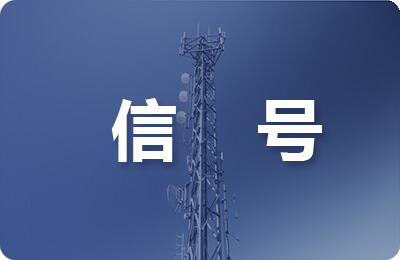胰岛素经PI3K/Akt/p70S6K1信号通路促进小鼠成肌细胞的增殖
时间:2022-08-11 01:14:23

(上海第十人民医院 上海 20072)
【摘要】目的:探讨在促小鼠成肌细胞增殖过程中,胰岛素对PI3K/Akt/p70S6K1信号传导通路的作用。方法:以小鼠成肌细胞C2C12为研究对象,利用蛋白免疫印迹(western blot)和MTT方法检测Akt蛋白激酶的表达和细胞增殖变化。结果(1)胰岛素(100-200 nM)浓度依赖性地促进C2C12细胞的增殖,胰岛素干预C2C12细胞,引起Akt/p70S6K1的磷酸化;(2)PI3K抑制剂LY294002能浓度依赖地抑制胰岛素引起的Akt磷酸化和细胞增殖;(3)p70S6K1抑制剂―雷帕霉素(rapamycin) 浓度依赖地抑制胰岛素引起的p70S6K1磷酸化和细胞增殖。结论:胰岛素促进小鼠C2C12成肌细胞的增殖。胰岛素能激活C2C12细胞的Akt/p70S6K1信号通路,并且这种激活是胰岛素促进的C2C12细胞增殖所必需的。
【关键词】胰岛素;C2C12细胞;Akt/p70S6K1的磷酸化;雷帕霉素
InsulinpromoteC2C12 myoblast proliferation viaPI3K/Akt/p70S6K1
Mei Aihong1 Yan Zhengmao1 Zhang Guoliang1 Wu Guoting2
【Abstract】Objective: To explore the effectof insulin in on the signaling pathway of PI3K/Akt/p70S6K1 related to the myoblasts proliferation of rats.Methods:, western blotwasperformed to detect the protein expression in cultured mouse C2C12 myoblasts.Results: (1) Insulin (100-200 nM) can stimulateC2C12 myoblasts proliferation with a dose dependent manner andpromotethe phosphorylation of Akt/p70S6K1. (2) PI3K inhibitor of LY294002 can inhibit insulin-induced Akt phosphorylation and cell proliferation with a concentration dependent manner. (3) p70S6K1 inhibitor of rapamycin can inhibit insulin-induced p70S6K1 phosphorylation and cell proliferation with a concentration relationship . Conclusion:. Insulin can stimulate C2C12 myoblast proliferation andthisactivation of Akt/p70S6K1 signaling pathway is necessary for insulin-induced C2C12 myoblast proliferation.
【Key works】Insulin; C2C12; myoblasts;phosphorylation of Akt/p70S6K1;rapamycin
【中图分类号】R711.4【文献标识码】A【文章编号】1008-6455(2011)06-0273-03
骨骼肌损伤后的再生过程包括,骨骼肌前体细胞(卫星细胞)的增殖和分化,以及多个卫星细胞融合成肌管参与骨伤肌的修复[1]。以往的研究证实,胰岛素能促进小鼠成肌细胞DNA和蛋白质的合成,增加PCNA(Proliferating Cell Nuclear Antigen,增殖细胞核抗原和cyclin D1(细胞周期蛋白D1)蛋白的表达,促进细胞从G1期向G2/M期转变,在骨骼肌前体细胞的增殖和分化中起重要作用[2]。
尽管在很多细胞中,已有对胰岛素或胰岛素样生长因子-1的促细胞增殖信号通路的研究,但在骨骼肌细胞,对胰岛素调控细胞增殖的信号通路的研究还不多。已有的研究证实,MAPK信号通路参与了胰岛素样生长因子-1促进的骨骼肌细胞的增殖[3];在胰岛素促进的细胞增殖中,PI3K和MAPK信号通路都参与了该过程。但是, 哪些PI3K下游因子参与胰岛素促进的骨骼肌细胞增殖目前还不十分清楚。p70S6K1是PI3K/Akt通路的重要下游因子,它是一种蛋白激酶,是细胞生长、增殖的关键性调控因子,它能够磷酸化核糖体40S小亚基蛋白S6,而磷酸化的S6蛋白能促进蛋白质翻译起始[1,3]。已有研究报道p70S6K1能调控蛋白质的合成[4, 5]。
C2C12成肌细胞是一种来源于小鼠卫星细胞的细胞株,是广泛地用于研究骨骼肌生长和分化的体外模型。因此,我们以小鼠成肌细胞C2C12为对象,研究胰岛素是否通过激活PI3K/Akt/p70S6K1信号通路,促进成肌细胞的增值。
1 材料和方法
1.1 试剂和溶液配制:胰岛素, LY294002,雷帕霉素(rapamycin)和四甲基偶氮唑蓝(MTT)购自Sigma公司(St Louis,MO, USA)。磷酸化Akt(Ser-473)抗体,Akt抗体, 磷酸化p70S6K1抗体购自细胞信号技术公司(Cell Signaling Technology ,Beverly, MA, USA)。p70S6K1抗体购自Santa Cruz 生物技术公司(Biotechnology,Santa Cruz, CA, USA)。DMEM购于Invitrogen公司(Carlsbad, CA, USA)。胎牛血清购自Hyclone公司(logan, UT, USA)。
LY294002和雷帕霉素(rapamycin) 溶于二甲基亚砜(dimetheyl sulphoxide),储存于-20℃;胰岛素溶于水配制成100μM母液,分装储存于-20℃;MTT的配制:thiazolyl blue tetrazolium bromide 溴化噻唑蓝四氮唑(即前述的四甲基偶氮唑蓝MTT)(M5655) 以PBS配制成5mg/ml贮存液,0.22μm滤膜过滤除菌,-20℃避光保存。
1.2 细胞培养:C2C12细胞购自中国科学院上海科学院研究院细胞库。C2C12细胞接种于含有10%胎牛血清的培养基DMEM (内含4.5g/L 葡萄糖(glucose), 4 mM 谷氨酸(glutamine),100U/ml青霉素和100mg/L链霉素)中, ,置于37℃5%CO2的培养箱中培养。当细胞长到80%-90%时,按1:2-3的比例传代。传代时先用PBS漂洗细胞一遍后,用胰酶消化3min,加入与胰酶相等体积的完全培养液中止消化,再将细胞轻轻吹打下来,于新的细胞培养皿中传代。
1.3 免疫印记:当C2C12细胞生长至80%融合时,用无血清的培养液处理12-16小时,加入胰岛素(终浓度200 nM)处理相应的时间后,收集细胞用于免疫印记检测[6]。具体的步骤为:弃去细胞上层培养液,用冰冷的PBS润洗一遍,用细胞刮子收集细胞于1.5ml离心管中,6000rpm4 ℃离心5分钟,弃去上清,加入含有各种蛋白酶抑制剂(1 mM sodium vanadate(正钒酸钠), 1 mM leupeptin(亮肽素), 1 mM aprotinin(抑肽酶), 1 mM phenylmethylsulfonyl fluoride(PMSF,苯甲基磺酰氯化物,), 1 mM dithiothreitol(DTT,二硫苏糖醇), 和1 mM pepstatin A(胃酶抑素A))的RIPA 缓冲液(100 mM Tris, 150 mM NaCl, 1% Triton, 1% deoxycholic acid, 0.1% SDS, 1 mM EDTA, and 2 mM NaF),旋涡混匀,冰上放置30min,4 ℃12000rpm离心10min,取上清用Bio-Rad公司的Lowry 试剂盒测定总蛋白浓度,用96孔板中进行测定,操作按说明书进行。根据所测蛋白浓度,计算出各样品取相同上样量所需体积,进行免疫印迹实验,所选变性聚丙烯酰胺凝胶分离胶浓度为7%-10%。将样品与2×SDS上样缓冲液混合,于100℃煮沸5min后上样。恒压100V电泳,时间至样品染料指示剂至胶的下端。用湿转法100V 恒压转膜90分钟。然后,用丽春红染膜1-2min观察条带。用PBS/T洗膜2次,每次5min,用5%脱脂奶粉(PBS/T配制)封闭1小时,加入一抗4℃过夜。用洗膜液洗涤3次,每次5min,加入二抗作用1小时,再用洗膜液洗涤3次,每次10min。用ECL溶液(PE公司)进行发光反应,操作按照说明书进行。
1.4 细胞增殖实验:细胞增殖实验用MTT法检测[7]。取100 μl细胞悬液(约5000个细胞)于96孔板中,用血清培养液培养24小时,加入胰岛素(200 nM)作用 20小时,加入MTT溶液20 μl (5 mg/ml)孵育4小时,吸去上层液体,加入200 μl DMSO溶解紫色结晶,用分光光度计测量570 nm的吸光度。
1.5 统计学分析:数据用平均值±标准误表示,当两组间比较时用非配对t检验,多组间比较时用单因素方差分析进行统计学分析,P
2 结果
2.1 胰岛素对C2C12细胞的增殖作用: 为明确胰岛素是否刺激C2C12细胞的增殖,用胰岛素处理细胞,MTT法检测细胞的增殖,结果表明胰岛素能浓度依赖性地增加C2C12细胞的增殖(如图1)。
Figure 1. Serum-starved C2C12 cells were cultured in the presence or absence of insulin (100 or 200 nM) for 24 hours. The MTT assay was performed as described in the Methods. Values are mean±SE from three replicate experiments. * and ** indicates significantly different when compared to the control (*P
2.2 胰岛素对C2C12细胞Akt的激活: Akt是一种蛋白激酶,是细胞生长、增殖的关键性调控因子。如图2A所示,胰岛素作用C2C12细胞30分钟,Akt能被胰岛素激活。为了研究PI3K/Akt信号通路在胰岛素促进的C2C12细胞增殖中的作用,用 PI3K抑制剂LY294002作用细胞,发现它能浓度依赖地抑制胰岛素引起的Akt磷酸化(如图2A),提示PI3K是Akt的上游分子。进一步研究发现LY294002浓度依赖地抑制胰岛素引起的细胞增殖(如图2B),表明PI3K/Akt信号通路的激活参与了胰岛素引起的C2C12细胞的增殖。
Figure 2. (A) Serum-starved C2C12 cells were pretreated with or without LY294002 (10 or 20 μM) for 30 min, then in the presence or absence of insulin (100 nM) for 30 min. Immunoblotting analysis was performed using the antibodies against phospho-Akt and Akt. (B) Serum-starved cells were cultured in the presence or absence of LY294002 (10, 20 μM), followed by the treatment with insulin (100 nM) for 24 hours. MTT assays were performed. Values are the mean±SE from three replicate experiments.** indicates significantly different compared to the control (P
2.3 胰岛素对C2C12细胞p70S6K1的激活:p70S6K1是PI3K/Akt信号通路的重要下游分子,为了研究p70S6K1在胰岛素刺激的C2C12细胞增殖中的作用,用不同浓度的mTOR/p70S6K1的专一性抑制剂――雷帕霉素(rapamycin)处理细胞,发现该抑制剂对胰岛素激活的p70S6K1有浓度依赖性的抑制作用(如图3A),胰岛素刺激的C2C12细胞增殖也被rapamycin明显抑制(如图3B),这说明p70S6K1的激活在胰岛素诱导的C2C12细胞增殖中起重要作用,是细胞增殖所必需的。
Figure 3. (A) Serum-starved C2C12 cells were pretreated with or without rapamycin (10 or 20 nM) for 30 min, then in the presence or absence of insulin (100 nM) for 2 hours. Immunoblotting analysis was performed using the antibodies against phospho-p70S6K1 and p70S6K1. (B) Serum-starved cells were cultured in the presence or absence of rapamycin (10 or 20 nM), followed by the treatment with insulin (100 nM) for 24 hours. MTT assays were performed. Values are the mean±SE from three replicate experiments.** indicates significantly different compared to the control (P
3 讨论
研究表明,一些生长因子通过跨膜信号转导激活PI3K激酶,使AKT磷酸化,AKT再直接磷酸化mTOR[8, 9]。mTOR蛋白是一种多功能激酶,是细胞增殖、蛋白质合成和细胞周期进程的关键性调节子。mTOR的下游效应器主要包括核糖体S6激酶(p70S6K)、翻译起始 因 子 eIF4E 和 eIF4G1 、 翻 译 延 长 因 子 eEF2 及 翻 译 抑 制 蛋 白4E-BPs。P70S6K是一种核糖体蛋白激酶,被mTOR在Thr389或Thr404磷酸化后激活,而磷酸化40S核糖体S6蛋白,控制着含有5’-TOP结构的mRNA的翻译,这些mRNA编码的主要是白体蛋白和翻译延长因子,因此非常重要[10-12]。
在本研究中,发现胰岛素促进小鼠成肌细胞的增殖,AKT/p70S6K1信号通路的激活参与了胰岛素引起的成肌细胞的增殖。以往研究证实[2],在小鼠成肌细胞C2C12中,胰岛素受体高表达,在10nM胰岛素的作用下,胰岛素受体即自身磷酸化。尽管在C2C12细胞中IRS-1, IRS-2和Shc蛋白均表达,但在胰岛素的作用下只有IRS-1蛋白高度磷酸化。IRS-1蛋白磷酸化后与PI3K激酶的p85亚基结合,进而激活下游的信号分子。在本研究中,发现胰岛素激活小鼠成肌细胞AKT和p70S6K1信号分子(图2A和3A),尽管并没有证实是否AKT是p70S6K1的上游分子,但以往的研究证实在L6肌管细胞中过表达的AKT可促进胰岛素刺激的p70S6K1激酶的激活[13],提示AKT是p70S6K1的上游分子。本文对培养的C2C12细胞无血清培养处理后,再加入胰岛素或相应的信号通路的化学抑制剂,以观察哪些信号通路参与了细胞的增殖,发现PI3K/ p70S6K1通路是胰岛素刺激的细胞增殖所必须的,因为LY294002(PI3K, AKT的抑制剂)和rapamycin(p70S6K1的抑制剂)能完全抑制胰岛素促进的细胞增殖(图2B和3B)。这表明p70S6K1激酶的激活在骨骼肌细胞的增殖中起很重要的作用。
因此,该体外研究结果表明,以p70S6K1激酶为靶位点,激活该激酶的药物或因子,将有助于骨骼肌细胞的生长,这为这类药物的进一步体内研究提供了一定的理论基础。
参考文献
[1] Musaro, A., Growth factor enhancement of muscle regeneration: a central role of IGF-1. Arch Ital Biol, 2005. 143(3-4): p. 243-8.
[2] Conejo, R. and M. Lorenzo, Insulin signaling leading to proliferation, survival, and membrane ruffling in C2C12 myoblasts. J Cell Physiol, 2001. 187(1): p. 96-108.
[3] Philippou, A., et al., The role of the insulin-like growth factor 1 (IGF-1) in skeletal muscle physiology. In Vivo, 2007. 21(1): p. 45-54.
[4] Qian, Y., et al., PI3K induced actin filament remodeling through Akt and p70S6K1: implication of essential role in cell migration. Am J Physiol Cell Physiol, 2004. 286(1): p. C153-63.
[5] Asnaghi, L., et al., mTOR: a protein kinase switching between life and death. Pharmacol Res, 2004. 50(6): p. 545-9.
[6] Zhou, Q., et al., Transactivation of epidermal growth factor receptor by insulin-like growth factor 1 requires basal hydrogen peroxide. FEBS Lett, 2006. 580(22): p. 5161-6.
[7] Meng, D., et al., Insulin-like growth factor-I (IGF-I) induces epidermal growth factor receptor transactivation and cell proliferation through reactive oxygen species. Free Radic Biol Med, 2007. 42(11): p. 1651-60.
[8] Chiu, T., C. Santiskulvong, and E. Rozengurt, EGF receptor transactivation mediates ANG II-stimulated mitogenesis in intestinal epithelial cells through the PI3-kinase/Akt/mTOR/p70S6K1 signaling pathway. Am J Physiol Gastrointest Liver Physiol, 2005. 288(2): p. G182-94.
[9] Hafizi, S., et al., ANG II activates effectors of mTOR via PI3-K signaling in human coronary smooth muscle cells. Am J Physiol Heart Circ Physiol, 2004. 287(3): p. H1232-8.
[10] Guttridge, D.C., Signaling pathways weigh in on decisions to make or break skeletal muscle. Curr Opin Clin Nutr Metab Care, 2004. 7(4): p. 443-50.
[11] Pullen, N. and G. Thomas, The modular phosphorylation and activation of p70s6k. FEBS Lett, 1997. 410(1): p. 78-82.
[12] Zanchi, N.E. and A.H. Lancha, Jr., Mechanical stimuli of skeletal muscle: implications on mTOR/p70s6k and protein synthesis. Eur J Appl Physiol, 2008. 102(3): p. 253-63.
[13] Noda, S., et al., Overexpression of wild-type Akt1 promoted insulin-stimulated p70S6 kinase (p70S6K) activity and affected GSK3 beta regulation, but did not promote insulin-stimulated GLUT4 translocation or glucose transport in L6 myotubes. J Med Invest, 2000. 47(1-2): p. 47-55.